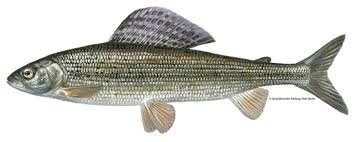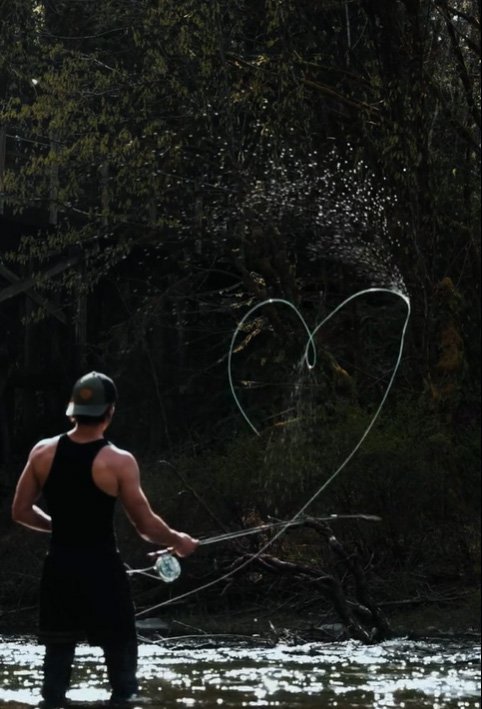Get Knotted !
We received some feedback recently that our flies were excellent, but the angler kept losing them due to his knots giving way. Therefore, we thought we’d put together this article for everyone to improve their knots.
There are many, many knots that can be used when trout fishing. In reality though, it’s best to focus on using 1 or 2 of them all the time, simply because it’s easy to forget all the details of a knot if you’re tying several different types at once. Here’s a summary of knots commonly used in trout fishing.
ALBRIGHT KNOT
The purpose of this knot is to join two lines of different thickness, so it is ideal for joining the reel end of the fly line to a backing line. You can see from the diagram that this knot might cause quite a bump on your reel and if you’re using a thick fly line, there can been times when this might snag the rest of the backing line as it comes off the reel. This could be an issue in the event of this knot coming in to play when playing a fish, so keep the tag ends as close to the knot as possible.

ARBOUR KNOT
The arbor knot is used to secure the backing line to the spool, it is a simple and secure knot. It’s much better than the slip knot we’ve all been tying for years (come on admit it 🙂 )First tie a half hitch in the end of the backing line and ease the knot close to the end of the backing line. Now pass the line once round the spool of the reel and put a half hitch around the long end of the backing line, capturing the spool in the loop you’ve made. Pull gently on the long end of the backing and it will slip and tighten round the spool. It will be stopped from coming off the spool by the first half hitch you made at the end of the backing line. Two half hitches put on the spool as well will stop the line slipping round the spool.

BLOOD KNOT
This knot is used for joining two pieces of line together, when tied correctly this is a very strong knot. Lay the two tag ends against each other from opposite directions for about six inches. Wind one line around the other four times and bring that tag end back through where the turns start. Keeping a loop at that point now wind the other line four times around its counterpart and bring that tag end back through the loop. The tag ends should now be sticking out in opposite directions. Gently pull the knot tight and remember to lubricate the knot with a little spit before you tighten it all the way. After trimming off the tag ends this is a neat and efficient knot. It is ideal for joining two lengths of line of similar diameter, as when making up a leader and using progressively thinner line. However, a large difference in the thickness of the lines and this knot will fail to perform.

FIGURE OF 8 KNOT
The figure of 8 knot is used for making loop connections, tying dry fly leaders and for tying on droppers.

GRINNER, UNI OR UNIVERSAL KNOT
This multi-named knot has the advantage that it tightens against itself rather than the eye of the hook. This means that the fly is left loose in a small loop of line and so moves much more freely and naturally in the water. The downside is that the knot can be quite difficult to tie in adverse conditions. You can see from the diagram that the knot requires that the line is looped around itself and through a loop several times. It’s a very fiddly knot and requires a good deal of practice.

NAIL KNOT
The Nail Knot is a popular knot to join fly line to leader. The use of a small hollow tube instead of a nail is also effective if you don’t have a nail. The simplicity of this knot hides its inherent weakness. Under stress there is nothing to stop this knot simply sliding off the fly line, especially if the fly line is of the coated variety when the coating may part from the core. While no knot is perfect it is another reason why a collar and superglue are the best answer to this problem.

PERFECTION LOOP
A loop is only as good as the knot that makes it – and the perfection loop is made with a knot that has inherent strength because it spreads the pressure over its length and there are no pinch points. It is used to form the loop that attaches the tapered leader to the tippet.

SEAGUAR KNOT
This knot is named after the leading manufacturer of fluorocarbon line, which gives an indication of its use. It is a very simple knot and can be employed for tying two lengths of line of unequal thickness as well as tying up leaders. When used to make droppers the tag end pointing away from the rod tip is left long and used as the dropper. A lot of heat is generated when the ends are drawn together and tightened, so it essential that the knot is well lubricated – usually with spittle – before pulling everything tight. You must ensure that you hold all four ends and pull them all at the same time or the knot will fail to form properly and you will be left with a small loop at one end which will severely weaken the performance of this knot.

SURGEON’S KNOT
This is a simple knot and is primarily used to attach the short piece of line to your leader so that a dropper can be attached to the leader. Just put the two pieces of line together and tie in two half hitches. Pull the knot tight after applying a little spit to lubricate the lines. Cut off the tag end, which must be the end pointing up the line or else the fish will rip off the dropper when it grabs your fly. The danger with this knot is that it has reduced strength when compared to other knots such as the figure of 8 knot so use it with caution!

TUCKED BLOOD OR IMPROVED CLINCH KNOT
This knot can be used to attach the hook to the line. While it is a simple knot to tie, but there is one caveat that you should bear in mind. When a knot is pulled tight at the final stage, a great deal of heat is generated through the friction of the pieces of line coming together. This can have a disastrous consequence in that the line can become so hot that it is fatally weakened and will fail at the first sign of stress. The easiest way to solve this problem is to simply dab a little saliva onto the line immediately before it is pulled tight. Some people use the simple blood knot, which turns the tag end through the original loop and leaves the end pointing towards the hook. Some put a second tuck in the knot by carrying the tag end back up through the second loop that is formed. This is called a tucked blood knot and is much more secure. There is a chance that a fine or ultrasmooth line can slip with a simple blood knot, but that risk is eliminated with the extra turn in a tucked blood knot. When you have tied your knot and pulled it together with a spot of spit, give it a good strong pull to make sure it is correctly made. It’s better for the knot to fail when you test it rather than when a fish tests it!




